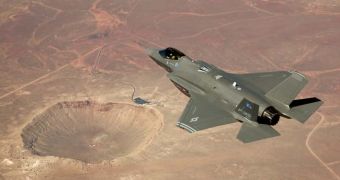The new Joint Strike Fighter (JSF), called F-35 Lightning II, will probably become the most relied-on aircraft in the US' strategic air fleet, seeking to meet the tactical requirements of the U.S. Air Force, the U.S. Navy, and the U.S. Marine Corps alike. In this respect, it will combine all the capabilities of the AV-8B Harrier, F-16 Fighting Falcons, F/A-18 Hornets, and the A-10 Thunderbolts into a single plane. It will also be adopted as a main combat unit in the UK, Australia and many other countries.
Although it is a bold program, criticism of the jet could not be avoided. Two of the most ardent critics are well-known experts Winslow Wheeler and Pierre Sprey from the Center for Defense Information, who virtually destroyed the craft by means of their editorial. They labeled it as an underpowered, heavy “monstrosity” which could be easily defeated by ultimate aircraft sported by the Russian competition, given its thrust-to-weight ratio, low maneuverability or reduced firepower. The JSF “is too fast to see the tactical targets it is shooting at; too delicate and flammable to withstand ground fire,” they wrote.
But Major General Charles Davis of the US Air Force, Program Executive Officer of the JSF program, explained that this was not the case, showing that the analysts did not address the details accurately and that the jet was not planned as a pure air superiority craft, but as a multifunctional one. It provides much more potential for support in a plethora of tasks due to its series of hi-tech sensors, advanced stealth system and increased agility. It also contains an APG-81 (best combat radar system) and antennas that will provide data on the immediate environment, allowing F-35 to detect and take out its air or ground radar targets without exposing itself.
A camera system ensures the pilot a 360° field of view in any direction, through the floor, ceiling or his own body, also behaving as a missile warning system. The plane is able to securely communicate with any other system in the air or on ground. Its functionality relies mostly on its advanced stealth, which allows it to take out a considerable air force or a heavily-defended ground position. While not particularly good at achieving extreme speeds (its top velocity is Mach 1.6), it is built in order to ensure a smoother transonic acceleration (from subsonic to supersonic speeds), which is far more important.
As Jon Beesley, Chief Test Pilot for the F-35 JSF from Lockheed Martin, says, while F-22 Raptor (the only other jet it can be compared to) is best suited “for clearing the skies”, for anything else, he would choose the F-35, since it “offers a greater depth and breadth of missions”. For more details, go here.

 14 DAY TRIAL //
14 DAY TRIAL //